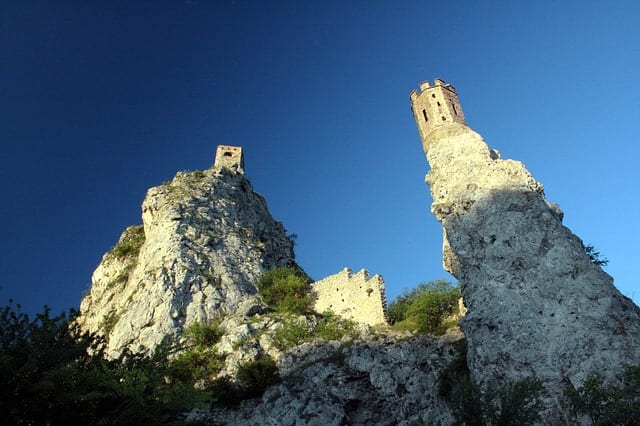
The mighty fortress above the confluence of the rivers Morava and Danube is one of the most significant archaeological sites in Slovakia. The oldest traces of settlement date back to 5000 BC. In the 1st century BC, the territory was populated with Celts. At the times of the Roman Empire, Devín was an important military station and, at the times of the Greater Moravian Empire, the castle was a significant boundary fortress as well as one of political and administration centres. The first written reference comes from 864. After the fall of the Greater Moravian Empire, the castle served as a boundary castle of the Hungarian state. Later the castle altered its owners several times. In 1809, the castle was blown up by Napoleonic troops. The castle is a national monument of cultural legacy belonging to the Municipal Museum at present.
The castle is open to the public until October, when it closes for the winter, from 10 a.m. to 5 p.m. during the week and 10 a.m. to 6 p.m. on weekends. The entrance fee is € 2 or € 0.66 with discount.
Archeological works are ongoing at the site. According to the daily Sme, in the last five years archeologists uncovered the remains of a Roman tower from 1st century AD, fragments of ceramics and a prehistoric settlement.